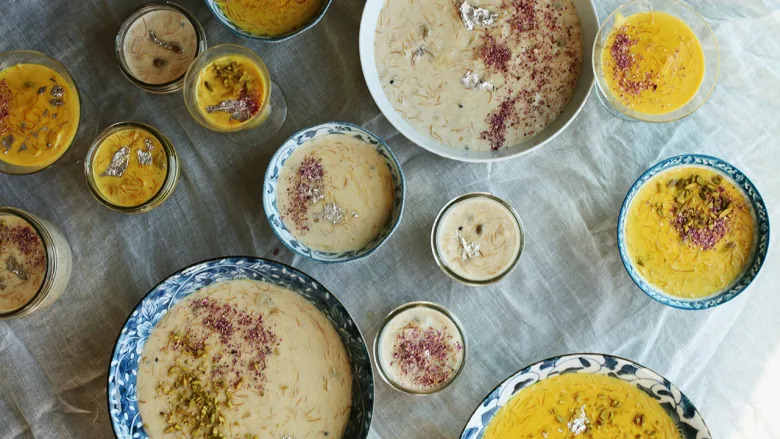The best part of festivals is, you get to eat a wide variety of delicacies, that are often not prepared at home. And when it comes to the festival of Eid, you can imagine a rich platter full of flavours, dry fruits, seviyan and mouth-watering meat preparations.
Islam does not allow fasting on Eid. “O you who believe! Eat of the good things wherewith We have provided you, and render thanks to Allah if it is (indeed) He whom you worship.” [Quran 2:172]. Here are some interesting facts about Eid.
- Eid-ul-Fitr is also known as “Sweet Eid” because of the amount and variety of sweet dishes consumed on this occasion celebrating the happy end of Ramadan.
• In the Gulf countries, harees is a Bedouin dish that is believed to have been prepared for thousands of years. Made with cracked wheat, salt and chicken or lamb, it is cooked slowly before being beaten to a porridge-like consistency with a wooden stick called a ‘midrib’. Served with ghee, harees is a celebration food that’s synonymous with Eid in this region.
• In Levant countries like Syria, Lebanon, Palestine and Jordan, maamoul is popular on Eid. These shortbread cookies are made with semolina flour and rosewater, stuffed with dates and pistachios, moulded into little balls and dusted off with icing sugar.
• The breakfast of Eid-ul-Fitr are sweet dishes, including Sheer Khurma, a dish made by cooking seviyan (a local form of long pasta) with dates in South East Asia.
• Seviyan kheer is a popular dish on Eid in India, Pakistan and Bangladesh. The desert has its origins in Mughal cuisine, and combines roasted vermicelli with condensed milk, cardamom, pistachios, saffron and ghee, and can be served either hot or cold with a decoration of silver foil.
• Eid-ul-Adha is the “Salty Eid” because a larger variety of dishes than those served during Eid-ul-Fitr are savoury, including beef or mutton depending on the animal slaughtered in the house.
• A barbecue is a must on first day of Eid-ul-Adha. The fried liver of the animal is used as breakfast and different dishes include different varieties of kebabs (boneless meat that has been meshed and fried or roasted), haleem, Korma, and other varieties. Rice dishes, including different forms of Pulao and Biryani, are also very popular in South Asia.
• Kokoreç, which is made from intestines, is eaten in Turkey and other Balkan Muslim communities where it is very popular on Eid-ul-Adha.
• Ketupat is a popular traditional celebratory dish for Eid al-Fitr meal in Brunei, Indonesia, Malaysia, Singapore and Southern Thailand. It is a parcel of young palm leaves neatly woven and folded around cakes of glutinous rice, which have been half-cooked in coconut milk.
• In Turkey, Eid al-Fitr is often called Seker Bayram, or the sugar festival. And that means lots of baklava.
• Tufahije are apples stewed in sugar water, and are a key component of any Eid feast in Bosnia and Herzegovina, and throughout the Balkans. The apples are peeled, cored and poached, then stuffed with crushed walnuts and whipped cream, topped with cinnamon and served in the poaching liquid.
